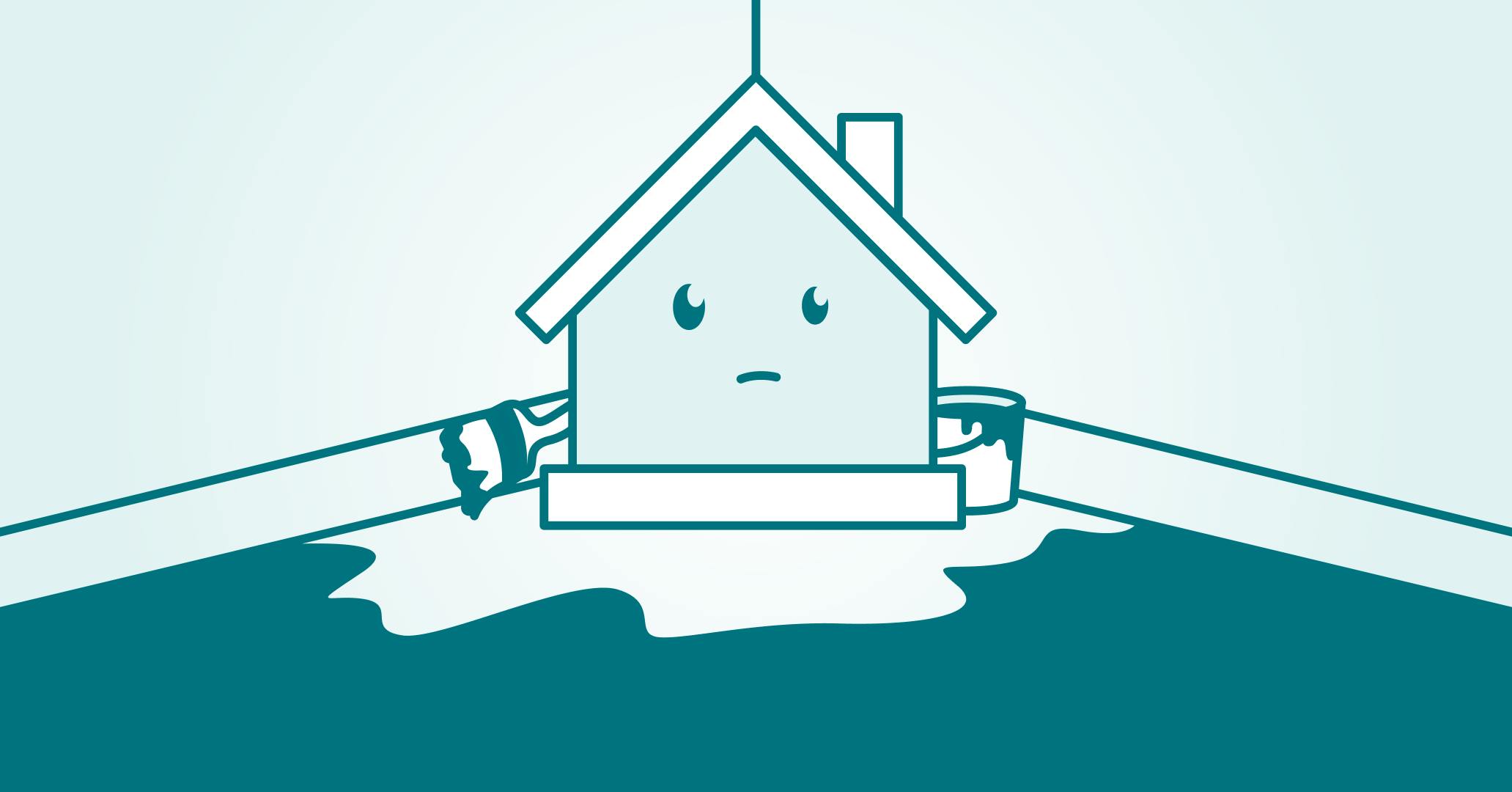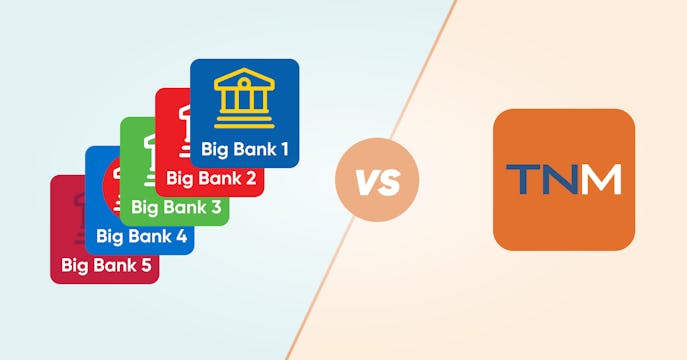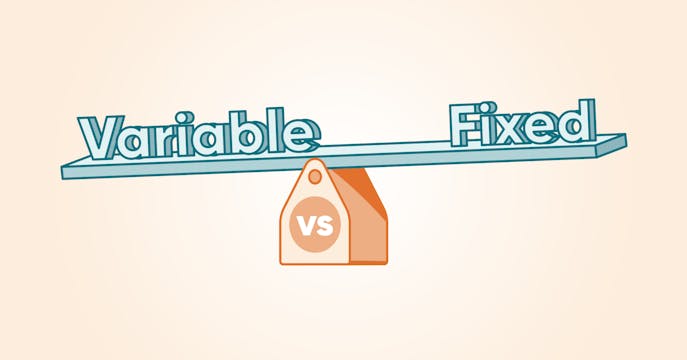Find a way out to a better rate and mortgage.
For your insured or uninsured mortgage, switch to a better deal.
Starting November 21, 2024, some uninsured mortgage situations join eligible insured mortgages by not having to re-qualify through the federal mortgage stress test to switch lenders.
That means a better chance of qualifying at your mortgage contract rate (assuming the lender has had time to implement this recent change) and not being held hostage to your bank's offer, opening up the ability to look for a better deal.
Have you had your mortgage for a while? You may think your mortgage is no longer insured against default. But if you haven't made any major changes, like a refinance or amortization change, the insurance may still be intact for switching and accessing a lower insured rate.
Go for the stretch (of your amortization).
Using our insured THINK Financial fixed-rate product as an example, if you have equity built up, one of our expert True North Mortgage brokers may be able to switch you to our lower fixed-rate product by stretching your amortization back up to 25 years (or more with a refinance, depending on lender).
Stretching it out will lower your payments, which in turn can lower your debt ratios, allowing you to qualify for your mortgage amount for the switch.
Once the new mortgage is set up, you can use your flexible pre-payment privileges to make extra payments on your mortgage principal to catch up on your amortization.
Some things to note for this stretch strategy:
- Incurred legal fees for collateral mortgage transfer of around $600-800 (higher for Alberta with recent new mortgage registration fees imposed)
- Appraisal may be required (True North would cover this fee)
- Home price and amortization caps may apply for an insured mortgage stretch
- Rate offered will depend on borrower details
There may be other requirements or other lenders that may work for you — talk to an expert broker about your situation.
Refinance to lower your payments.
If you can't make a switch, there's still some hope for lower payments — again by refinancing with your current lender to extend your amortization out to 25 or 30 years (or more):
- Typically an option for a mortgage with 20% or more paid down on your mortgage loan
- Can only bring loan-to-value (LTV) to 80% (85% with some lenders), so you'll need enough equity built up for this option
- Incurred legal fees of approx. $600-800
- Appraisal will be required (True North covers this fee in most cases)
- Typically not eligible for lowest-advertised rates
Put down a lump sum at renewal
Don't have a lot of amortization room? If you have access to extra funds, putting down a lump sum on your mortgage at renewal time may also afford you some flexibility to extend your mortgage length for lower payments. That way, if you can't switch for a better rate, you can still manage to eke out lower payments over your next term.
Want lower payments before renewal? If you've put down a lump sum, you may be able to recast your mortgage for instantly lower payments.
Go short? Term, that is.
Despite shorter-term rates being higher than the standard 5-year choice, some clients are choosing these options (e.g. 2 or 3-year), hoping to renew sooner into lower rates and still save — versus having to pay a penalty to break early (or pay today's rate for the entire 5 years).
Many Canadians (us included) hope and expect rates to hike back down within the next year or two.
If you choose a shorter term, make sure you have flexible pre-payment or payment-frequency options that allow you to pay more down on your principal before renewal. That way, if the economy doesn't cooperate and rates stay higher for longer, you have some room to lower your rate or payments.
Get temporary Rate Relief™
Available for new purchases and switches, our innovative Rate Relief is a low-rate 6-month fixed product — and it may be the budget break you need for a few months of lower payments.
This short-term reprieve has the same great features as our other THINK Financial mortgages. Certain conditions and restrictions apply; please talk to our expert True North brokers to see if this renewal option is right for you.
What options do you have with a variable-rate mortgage?
With prime rates lowering, talk to your expert broker about whether a variable rate makes more sense than a fixed-rate term this time around.
Did you manage to weather the recent higher rates with an ARM or a VRM product (adjusting vs. fixed payments)? If you have a VRM's fixed payments, you may not see any budget relief when rates drop, but you'll pay off your mortgage faster as the amortization ticks back down.
Choosing a variable rate going forward can provide instant rate relief during your term if rates drop. You'll also avoid the potential of paying heftier fixed-rate penalties if you suddenly want to break your fixed-rate term to take advantage of the lower rates.
Get a customized solution that fits your details.
Have more complex details that are hindering your renewal with your traditional lender?
We have the flexibility to craft a solution that may help see you through. Learn more here, and connect with a broker who specializes in short-term mortgage fixes.
Get unstuck, with great advice from a trusted expert.
Knowing the rate and mortgage options available to you, the pros and cons of a variable vs. fixed mortgage rate, and your mortgage renewal-rights as a borrower can help empower you during a time of economic volatility.
Our friendly, knowledgeable True North Mortgage brokers are here to help you — and can offer debt-reduction strategies, other ways to save on your mortgage, and renewal options to make the most of your mortgage budget.
Give us a shout, anywhere you are in Canada. We can help clear a path at renewal time — online, over the phone, through our chat, or at one of our stores.




